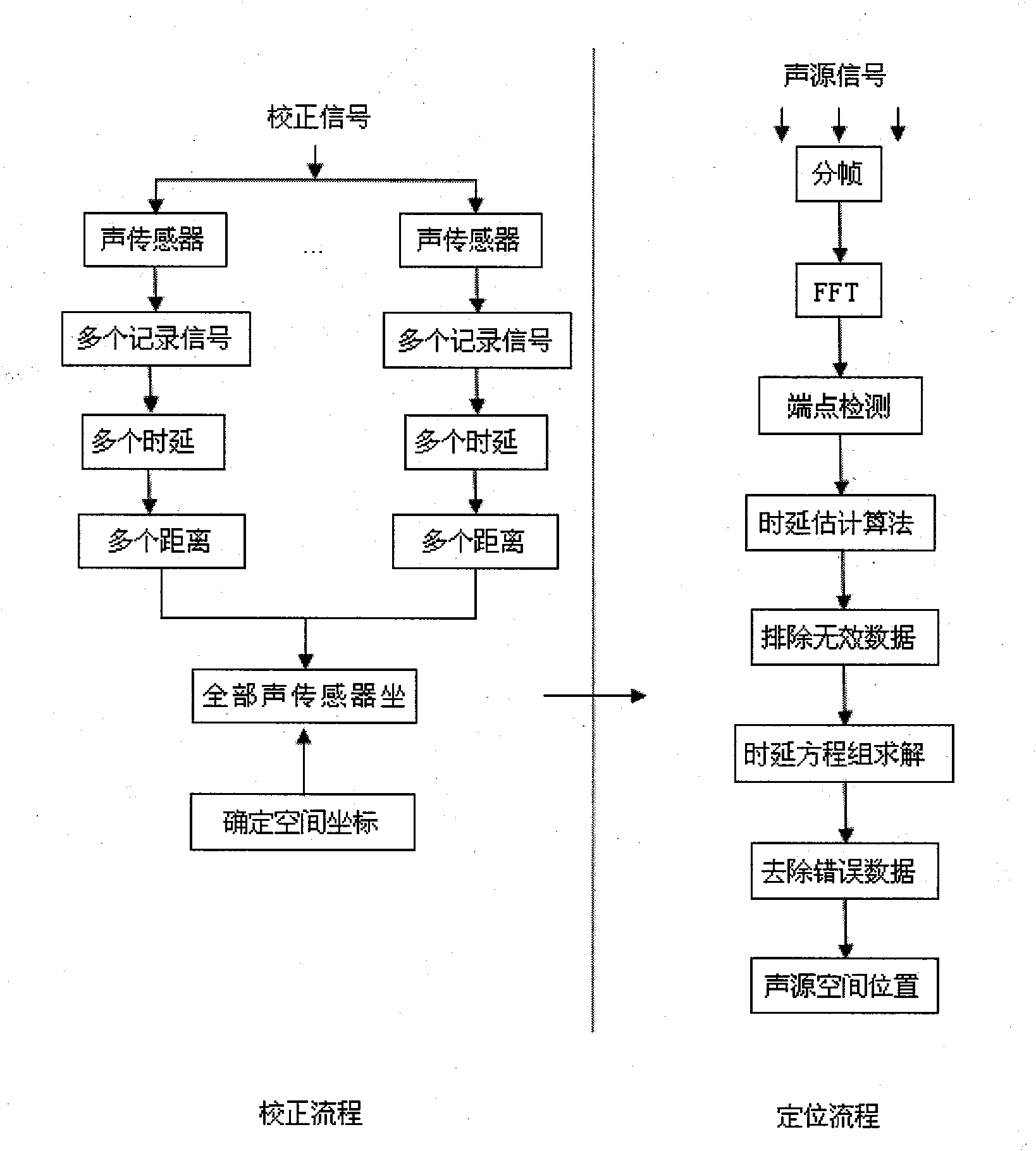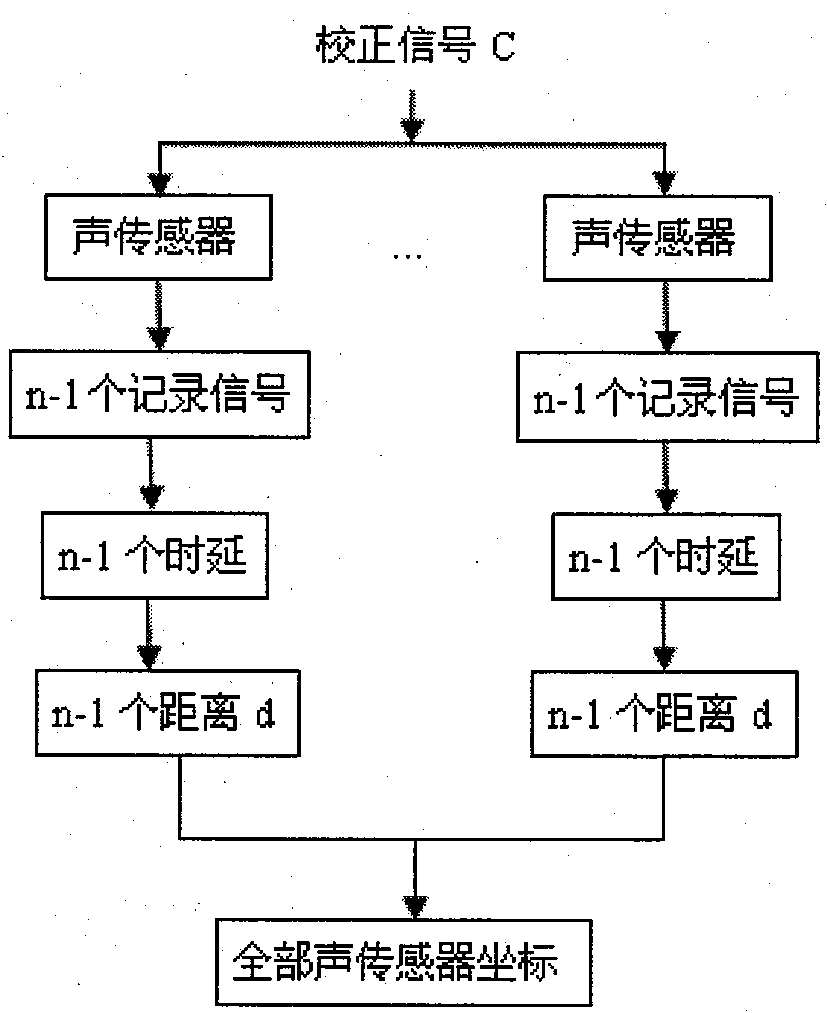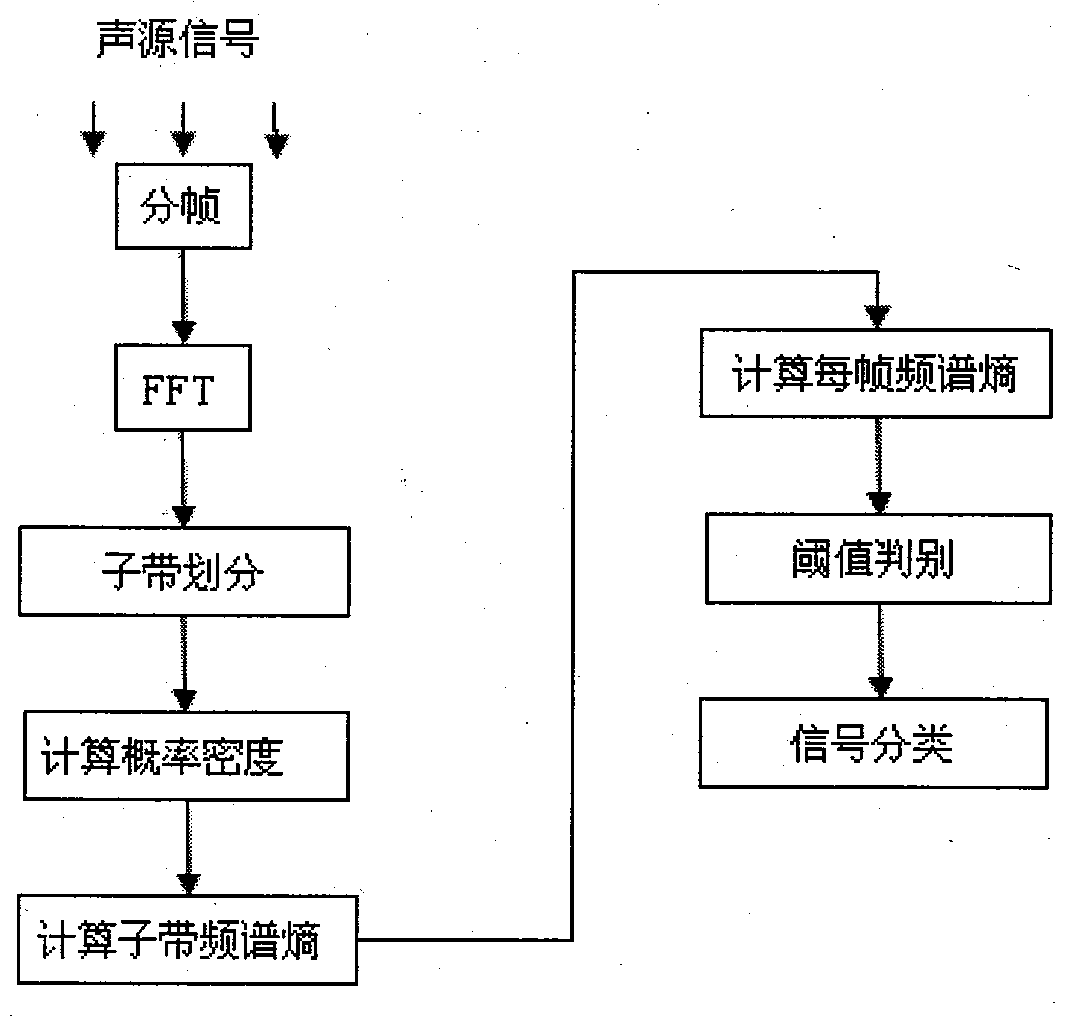Acoustic source spatial positioning method for distributed asynchronous acoustic sensor
An acoustic sensor and spatial positioning technology, applied in the field of speech, which can solve the problems of high algorithm complexity, environmental interference, and no commercial dedicated hardware.
- Summary
- Abstract
- Description
- Claims
- Application Information
AI Technical Summary
Problems solved by technology
Method used
Image
Examples
Embodiment Construction
[0081] The present invention will be described in detail below in conjunction with the accompanying drawings.
[0082] refer to figure 1 , a sound source spatial localization method of a distributed asynchronous acoustic sensor, comprising the following steps:
[0083] The first step, refer to figure 2 , to calculate the spatial coordinates under the assumption that
[0084] First, it is assumed that the number n and the spatial position of all acoustic sensors are constant during the data acquisition process, n is an integer greater than zero, the number of sound sources k is constant, k is an integer greater than zero, and the distance between the sound source and the acoustic sensor conforms to the near-field model The physical properties of each acoustic sensor are the same, and each acoustic sensor is sequentially numbered as acoustic sensor M1, M2..., Mn, and two acoustic sensors M1 and M2 with initial numbers 1 and 2 are selected, and the acoustic sensor M1 The posi...
PUM
 Login to View More
Login to View More Abstract
Description
Claims
Application Information
 Login to View More
Login to View More - R&D
- Intellectual Property
- Life Sciences
- Materials
- Tech Scout
- Unparalleled Data Quality
- Higher Quality Content
- 60% Fewer Hallucinations
Browse by: Latest US Patents, China's latest patents, Technical Efficacy Thesaurus, Application Domain, Technology Topic, Popular Technical Reports.
© 2025 PatSnap. All rights reserved.Legal|Privacy policy|Modern Slavery Act Transparency Statement|Sitemap|About US| Contact US: help@patsnap.com



